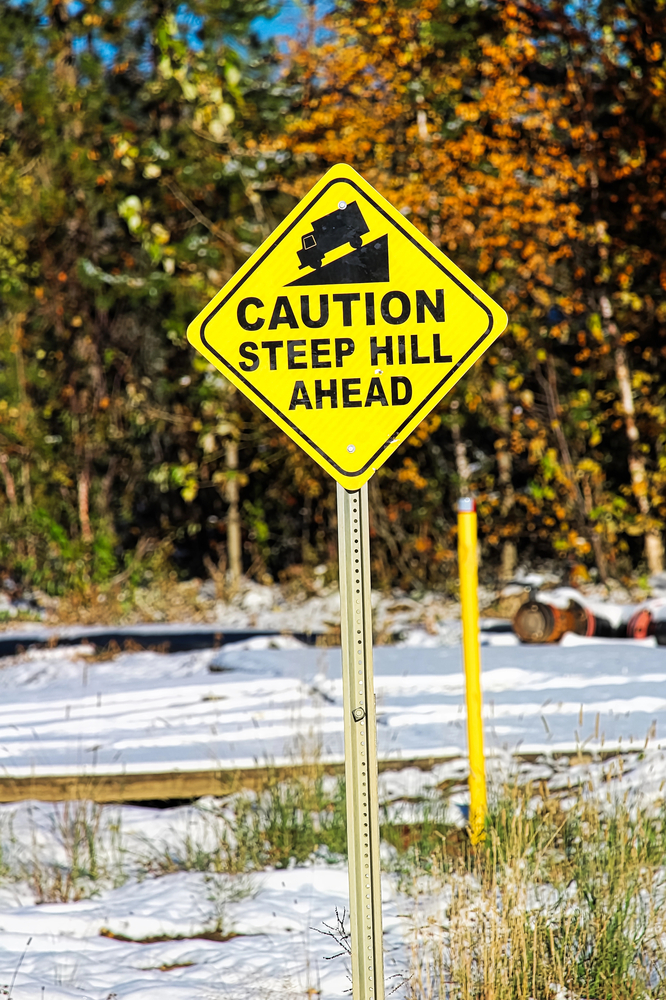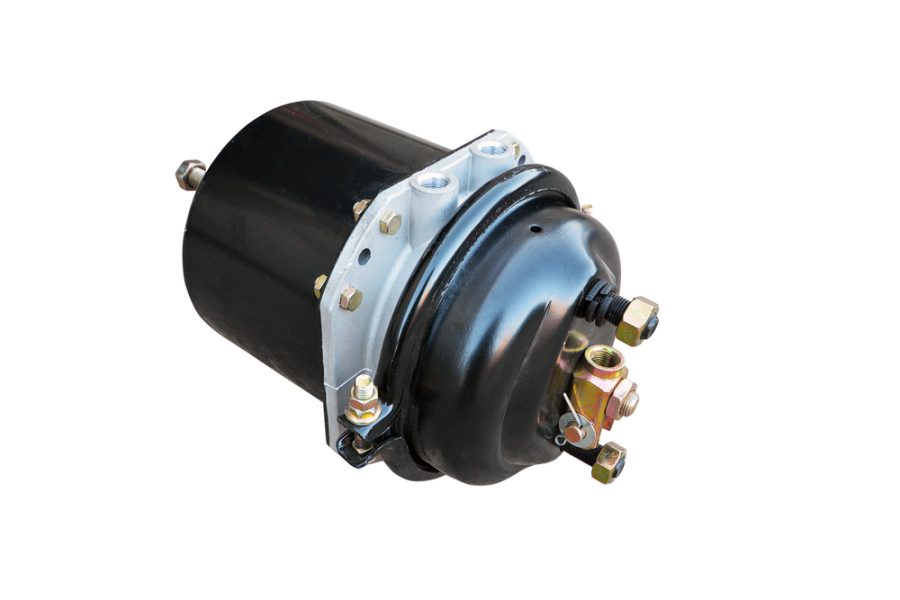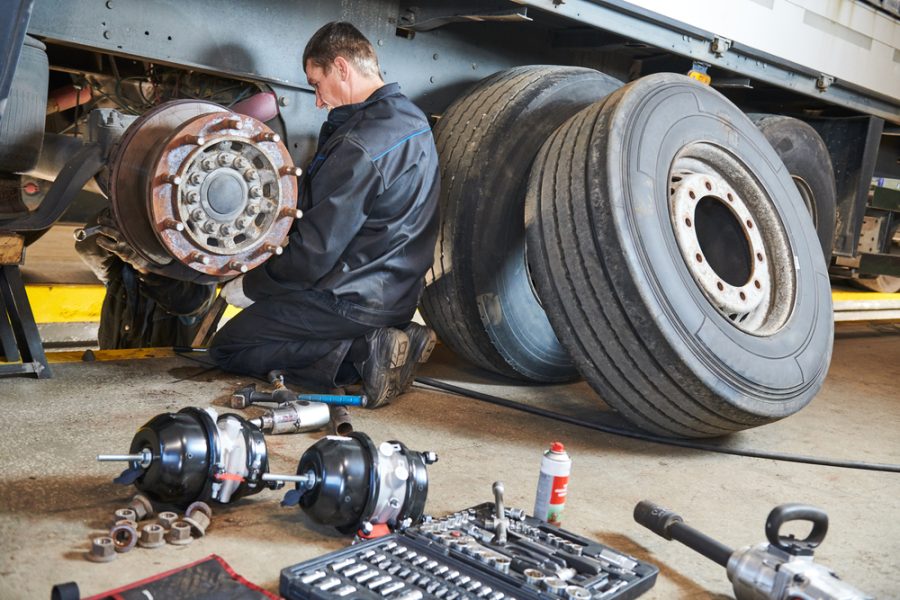Introduction
Brakes are a critical part of semi-trucks. They keep you and other road users safe. These systems are complicated with many parts that work together to work under all conditions. One of those parts are spring brakes. Unlike standard air brakes that only rely on air pressure to work, spring brakes use a powerful spring to keep the brakes engaged even if there’s a loss of air pressure. It’s a safety net for the truck.
They do two jobs: service brakes and parking brakes. When the truck is moving, air pressure compresses the spring and the brakes release. But when the air pressure drops or the parking brake is applied, the spring expands and applies the brakes and holds the truck in place.
What Are Spring Brakes? (CDL)
Spring brakes are designed to stop and secure a heavy vehicle. Unlike the service brakes that are used during normal driving and rely on air pressure to work, spring brakes use a mechanical spring. When there’s enough air pressure, the spring is compressed and the brakes release. But when the air pressure falls below a certain level, the spring engages the brakes and keeps the vehicle from moving.
Air Brake System Components
Air brakes are a safety-critical part of semi-trucks. The system uses compressed air to power the brakes and give you control over the braking force. In air-brake-equipped vehicles, the system is broken down into several key parts, and each one plays a big role in the whole system. Knowing these parts is important to keep the system working and safe for you and other road users.
Air pressure is the lifeblood of the air brake system. It’s generated by an air compressor and stored in tanks until needed. When you apply the brakes, the pressurized air travels through the brake lines to the air brake chambers. Inside the brake chambers, the air pressure acts on a diaphragm or piston and converts the air pressure into mechanical force that applies to the brakes. The efficiency and reliability of this system depend on maintaining the right air pressure and all parts in good working condition. Regular inspections and maintenance is key to prevent air leaks and other problems that can affect braking performance.
Spring Brake Chambers
These chambers have two main parts: the service brake chamber and the spring brake chamber. The service brake chamber works like a conventional air brake, and uses air pressure to activate the braking mechanism. When you apply the brakes, air pressure enters the service brake chamber, and pushes a diaphragm that engages the brakes. This part of the chamber is for normal driving conditions.
The spring brake chamber is for emergency and parking brake functions. It has a powerful spring that is compressed by air pressure during normal operations. If air pressure is lost or the parking brake is applied, the spring expands and forces the brakes to apply and hold the truck in place. The interaction between the service brake chamber and the spring brake chamber ensures the truck is safe even in case of an air system failure.
Spring Brakes in Parking and Emergency Situations
Spring brakes are critical in parking and emergency situations for heavy-duty vehicles. As parking brakes they engage automatically when you park the truck, to secure the vehicle. This is done by releasing the air pressure that keeps the powerful spring in the brake chamber compressed. Once the air pressure is released the spring expands and applies the brakes and keeps the vehicle from moving. This automatic engagement of the spring parking brakes is key to preventing rollaway and safety when you park on different terrain.
In emergency situations spring brakes are also a fail-safe. If there is a sudden loss of air pressure in the brake system the spring brakes will engage and bring the vehicle to a stop. This is different from the service brake system that relies on air pressure only. The parking brake control is operated by the driver to manually release or engage the spring brakes when parking the truck, while the service brake is used for normal driving conditions for smooth and controlled stopping.
Air Pressure and Spring Brakes
Air pressure is key to spring brake operation, both to activate and deactivate. In their normal released position, the spring brakes are held off by maintaining the right air pressure in the system that compresses the powerful springs and allows the wheels to turn. When you apply the parking brake or if there is a sudden loss of air pressure in the system all the air is exhausted from the brake chambers. This exhaust air allows the compressed springs to expand and automatically apply the brakes and bring the vehicle to a stop. This automatic application is a safety feature, to prevent the vehicle from moving out of control if the air pressure system fails.
Mechanical and Spring Force
Mechanical force and spring force are both part of a heavy-duty brake system. Mechanical force is applied when you press the brake pedal, air pressure acts on the diaphragm or piston in the brake chamber and translates that pressure into mechanical movement to engage the brakes. Spring force is mainly a fail-safe mechanism. In spring brakes a powerful spring is compressed by air pressure during normal operation. If air pressure drops or parking brake is applied the spring force is released and automatically applies the brakes to keep the vehicle from moving.
Control Valves and Supply Lines
Control valves and supply lines are key components of a heavy-duty brake system to ensure performance and safety. Control valves regulate the air pressure in the brake system and direct it to different brake chambers as needed. These valves respond to the driver’s input on the brake pedal and modulate the air pressure to the brakes for smooth and precise braking.
Meanwhile, the supply line is critical to brake efficiency by delivering a constant flow of compressed air from the air compressor to the brake system’s reservoirs and chambers. This constant air supply ensures there is always enough pressure to keep the brakes working whether in normal operation or in emergency.
Emergency Braking and Normal Driving
Spring brakes behave differently in emergency braking and normal driving to ensure safety and control in all situations. In normal driving, the air pressure in the brake system compresses the powerful springs in the spring brake chambers and keeps the brakes released. This allows the vehicle to move and the driver to control the braking through the service brake system. In emergency braking especially if there is a sudden loss of air pressure the spring brakes will engage. The loss of air pressure allows the compressed springs to expand and apply the brakes to bring the vehicle to a stop. This automatic engagement in an emergency is a fail-safe mechanism to prevent accidents caused by brake system failures.
S Cam and Spring Brakes
The S cam is a key part of spring brakes in heavy-duty vehicles. The S cam is a special camshaft with an “S” shape that is part of the brake system. When you apply the brakes air pressure actuates the brake chamber and the push rod extends. This extension turns the S cam which then forces the brake shoes against the brake drum to slow down or stop the vehicle. In spring brakes when the air pressure is released either during parking or due to a failure in the air system the powerful spring in the brake chamber expands.
Conclusion
Spring brakes are important for CDL drivers and fleet managers to ensure the safety and efficiency of their vehicles. Spring brakes are part of the air brake system and provide both emergency and parking brake functions. They will engage automatically if there is a loss of air pressure to prevent accidents and keep the vehicle stationary when parked. For CDL drivers understanding how spring brakes work and their role in the braking system is crucial for safe driving. Fleet managers must emphasize regular maintenance and inspection of the air brake system including spring brakes.





